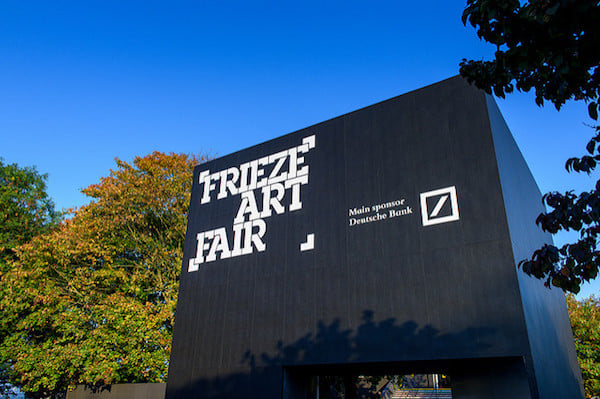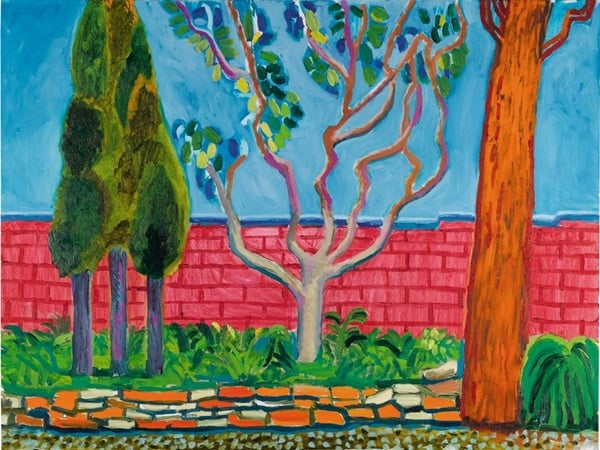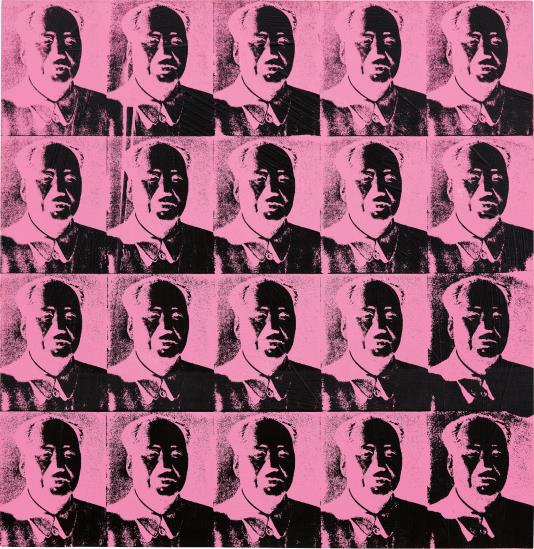Art Fairs
How Frieze Fair Sparked a Standalone Season on the Global Art Calendar
The fair transformed the London auctions.

The fair transformed the London auctions.

Eileen Kinsella

Back in the early aughts, when Frieze magazine founders Amanda Sharp and Matthew Slotover were first considering launching a major contemporary art fair for London, the month of October was a blip on the art market calendar.
Sotheby’s and Christie’s typically held modest mid-season contemporary auctions that month, with a niche focus on Italian contemporary art. The real auction fireworks took place in New York in May and November, followed by London in February and June.
Frieze London changed that when it debuted in 2003, quickly boosting the major houses’ sales. As an event on the global art circuit, it became a must-see fair, even before the launch of Frieze Masters in 2012 (which showcases art from the ancient era and Old Masters to the late 20th century).
“It’s quite remarkable how quickly it has become woven into the fabric of the global art calendar,” said Oliver Barker, chairman of Sotheby’s Europe, in an email to artnet News. “As the fair has gained momentum, so have our autumn sales; what was traditionally a lower value mid-season sale for us has grown into a major series of auctions where we now offer landmark works by established names—such as last year’s record-breaking Fontana—alongside young, rising stars.”
In 2003, the first year that Frieze launched, Sotheby’s mid-season contemporary evening sale totaled $5 million (£3.6 million). Last October, the sale hauled in $56.3 million (£36.4 million). In addition, Italian art sale volumes have seen similar spikes during this period. Barker calls the effect of Frieze on the London market over the past 13 years “transformative.”
Consider that in its first year, the fair attracted 27,700 visitors. Twelve years later that figure reached 105,0000, or nearly four times the original audience and among the highest on record. Compared to other fairs on the continent, which have been around for decades, Frieze tends to stand out. For instance, Art Basel has been around since 1970, and Art Cologne, while no longer quite as prestigious as it once was, was launched in 1967. In its latest edition, Art Basel reported attendance of 95,000 visitors, while Art Cologne received around 60,000.

David Hockney, Guest House Wall (2000) Courtesy of Sotheby’s.
When Frieze launched, the art scene in London was gathering steam, just as Germany’s was fading. Even so, London lacked a main event to anchor the city on the global calendar. New York, always regarded as competition as a cultural and financial center, was already a few steps ahead with the annual Armory Show.
That behemoth on the west side piers of Manhattan grew out of the upstart Gramercy International Art Fair that art dealer Paul Morris and several colleagues launched in hopes of stimulating the market during the depths of the mid-1990s recession.
“Frieze came along at a time when everything was just sort of exploding here and created that moment when everyone could come together, museums could put on their best shows, galleries could mount their most important exhibitions of the year and everyone could be in London for that one week.” Frieze director Victoria Siddall told artnet News in a telephone interview. “It has galvanized the whole city.”
As for the fair itself, Slotover and Sharp’s original idea was timing it to pick up on the buyers in town for mid-season auctions. But it wasn’t long before the collector flow was working the other way round—going to Frieze and then taking in the auctions.

Andy Warhol, 20 Pink Maos (1979). Courtesy of Phillips.
Phillips, which has been through several management changes in the last 15 years, began holding Frieze week auctions in 2006. That first sale took in $15.3 million (£8 million). In comparison, this week’s evening sale is expected to bring in between $19 million and $27 million. “Since its inception, Frieze has catalyzed the London art scene and created a heightened level of enthusiasm around the auction season,” said Jean-Paul Engelen, worldwide head of contemporary art at Philips.
Nowadays, the fair is vital for local and international dealers alike. British dealer Stephen Friedman has participated in the fair since its inception—now across all three platforms, including Frieze Masters and Frieze New York, which debuted in 2012. He told artnet News via email that the fairs have “changed the landscape of the London art world, demonstrating how fairs mean much more than just the commercial art market— from their talks program to the sculpture park and the curated sections, they inform, stimulate and inspire, encouraging us to think outside the box.”
Christian Albu, head of the postwar and contemporary evening auction at Christie’s London, echoed this sentiment: “London is never more alluring than in Frieze week.”